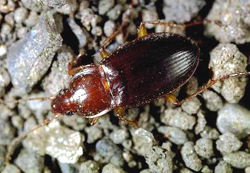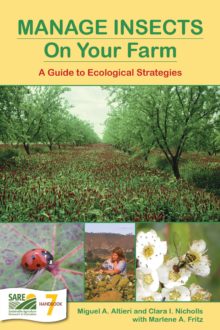
Beetle Banks Boost Beneficials
Some grass species can be important for natural enemies. For example, they can provide temperature-moderating overwintering habitats for predaceous ground beetles. In England, researchers established “beetle banks” by sowing earth ridges with orchard grass at the centers of cereal fields. Recreating the qualities of field boundaries that favor high densities of overwintering predators, these banks particularly boosted populations of two ground beetles (Demetrias atricapillus and tachyporus hypnorum), important cereal aphid predators. A 1994 study found that the natural enemies the beetle banks harbored were so cost-effective in preventing cereal aphid outbreaks that pesticide savings outweighed the labor and seed costs required to establish them. The ridges in this study were 1.3 feet high, 5 feet wide and 950 feet long (0.4 m x 1.5 m x 290 m).
For more information, see “Habitat management to conserve natural enemies of arthropod pests in agriculture” (Resources).
